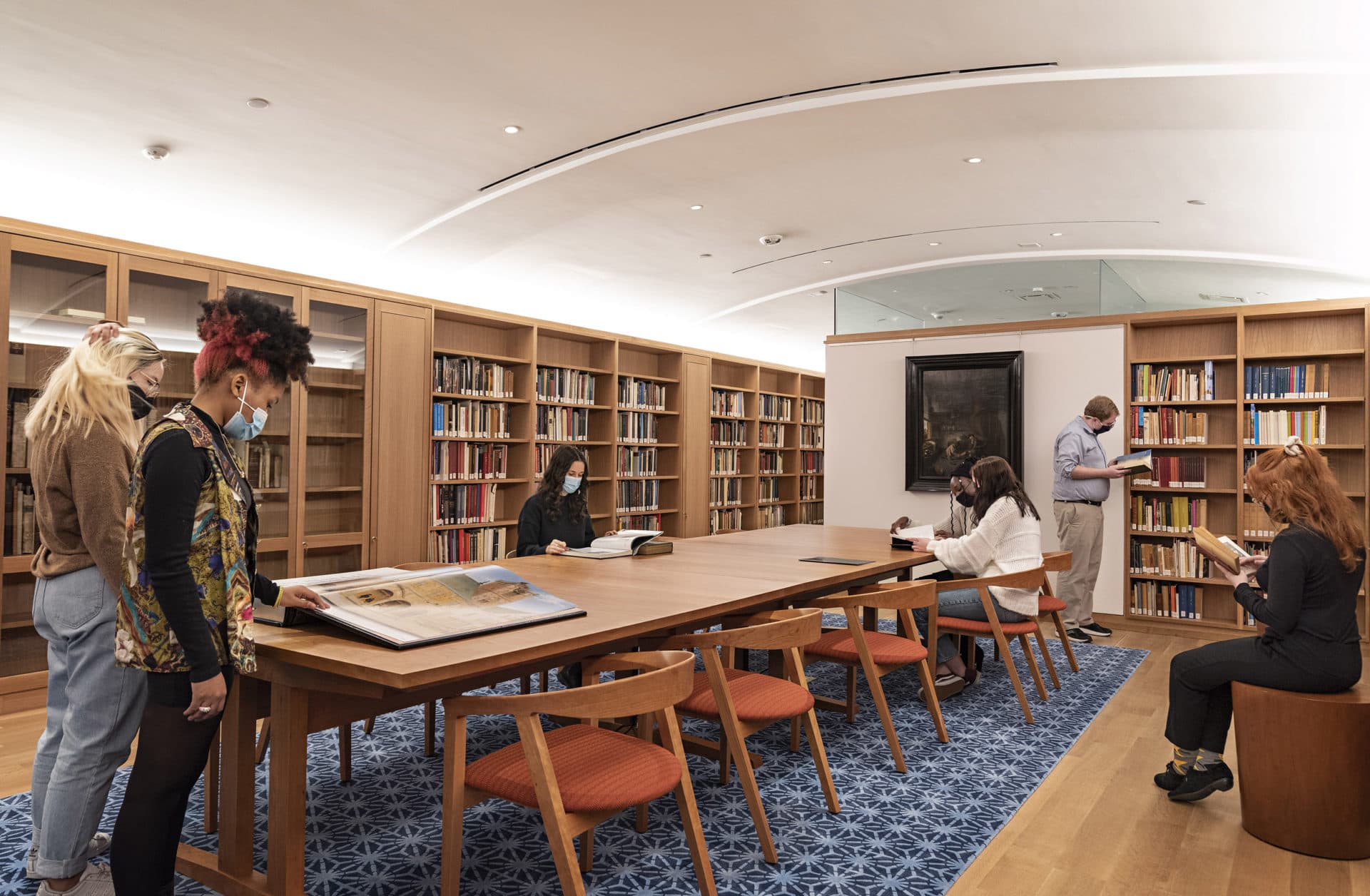Advertisement
Inside the MFA's newly renovated Dutch and Flemish art galleries
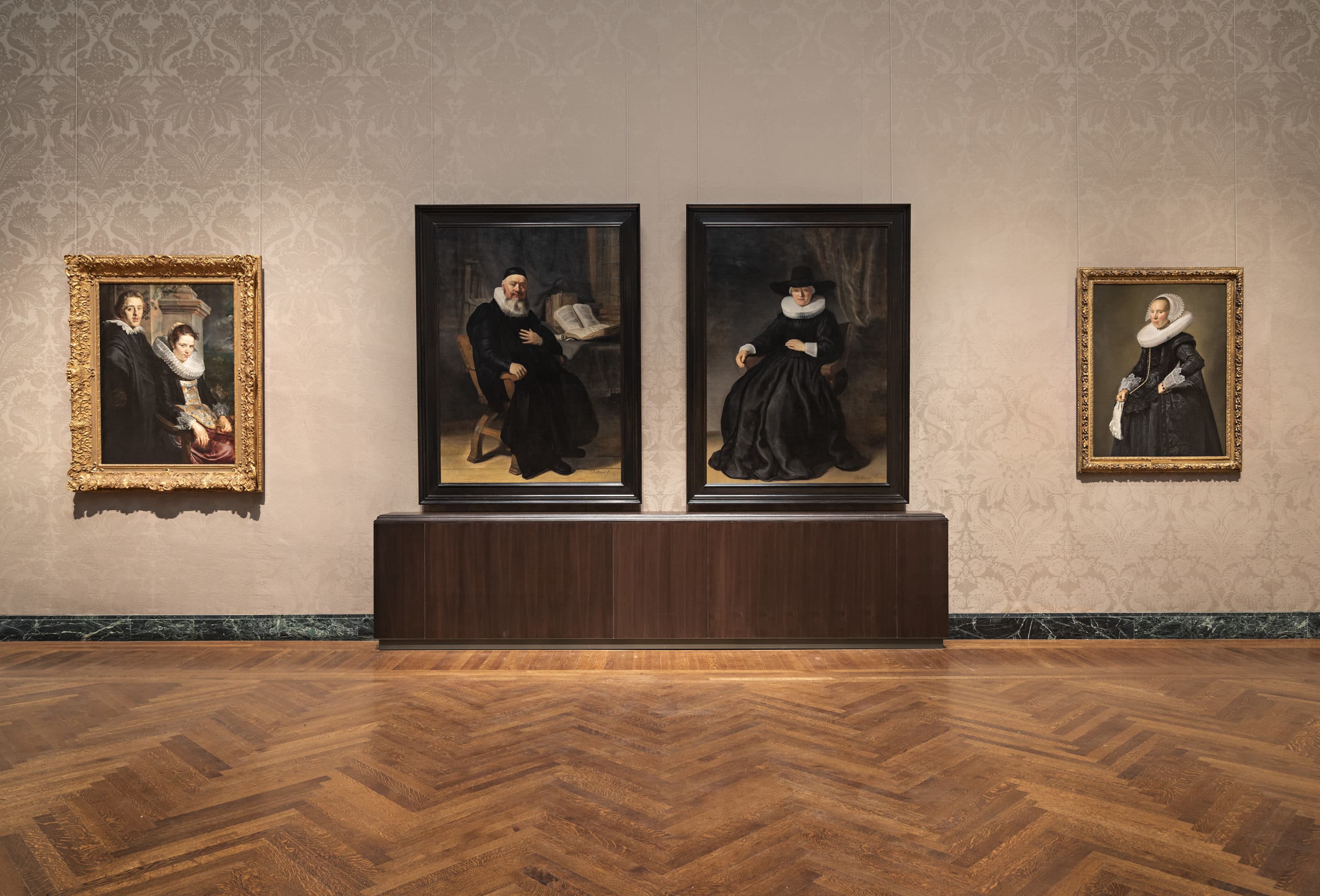
Boston’s Museum of Fine Arts never owned a Vermeer, but it has something even rarer, a painting Vermeer copied in two of his own paintings. Dirck van Baburen’s lascivious and satirical “The Procuress” was hung conspicuously on the wall in Vermeer’s “The Concert” — adding a winking overtone to the three apparently respectable performers portrayed in the most beloved of all the artworks stolen in the notorious 1990 Isabella Stewart Gardner Museum heist. But while the Vermeer is still missing, the Baburen is prominently on display in the largest of the seven elegantly renovated galleries devoted to Dutch and Flemish art at the MFA.
This room is a good example of the intelligence quietly underlying the new installation. At one end hangs one of only three known pairs of full-length Rembrandt portraits (an elderly couple: Maria Bockenolle and the Reverend Johannes Elison), while at the other end is Rembrandt’s small early portrait of Aeltje Uylenburgh, his future wife Saskia’s 62-year-old cousin. Near the Baburen are Hendrick ter Brugghen’s endearing “Boy Singing,” two portraits by Frans Hals, and Aelbert Cuyp’s enchanting “Orpheus Charming the Animals” (he’s playing a violin to an audience of leopards, an elephant, a camel, a small ostrich and a large cat, among other exotic and colorful birds and beasts).
Opposite all these Dutch paintings is a wall of Flemish masters, including Anthony van Dyck’s strangely sinister self-portrait as Icarus (a quasi-premonition of his own early death at 42?), Peter Paul Rubens’s striking portrait of Mulay Ahmad, the Berber King of Tunis, painted long after the potentate’s death, along with four of Rubens’ spectacularly free-wheeling biblical and mythological oil sketches.
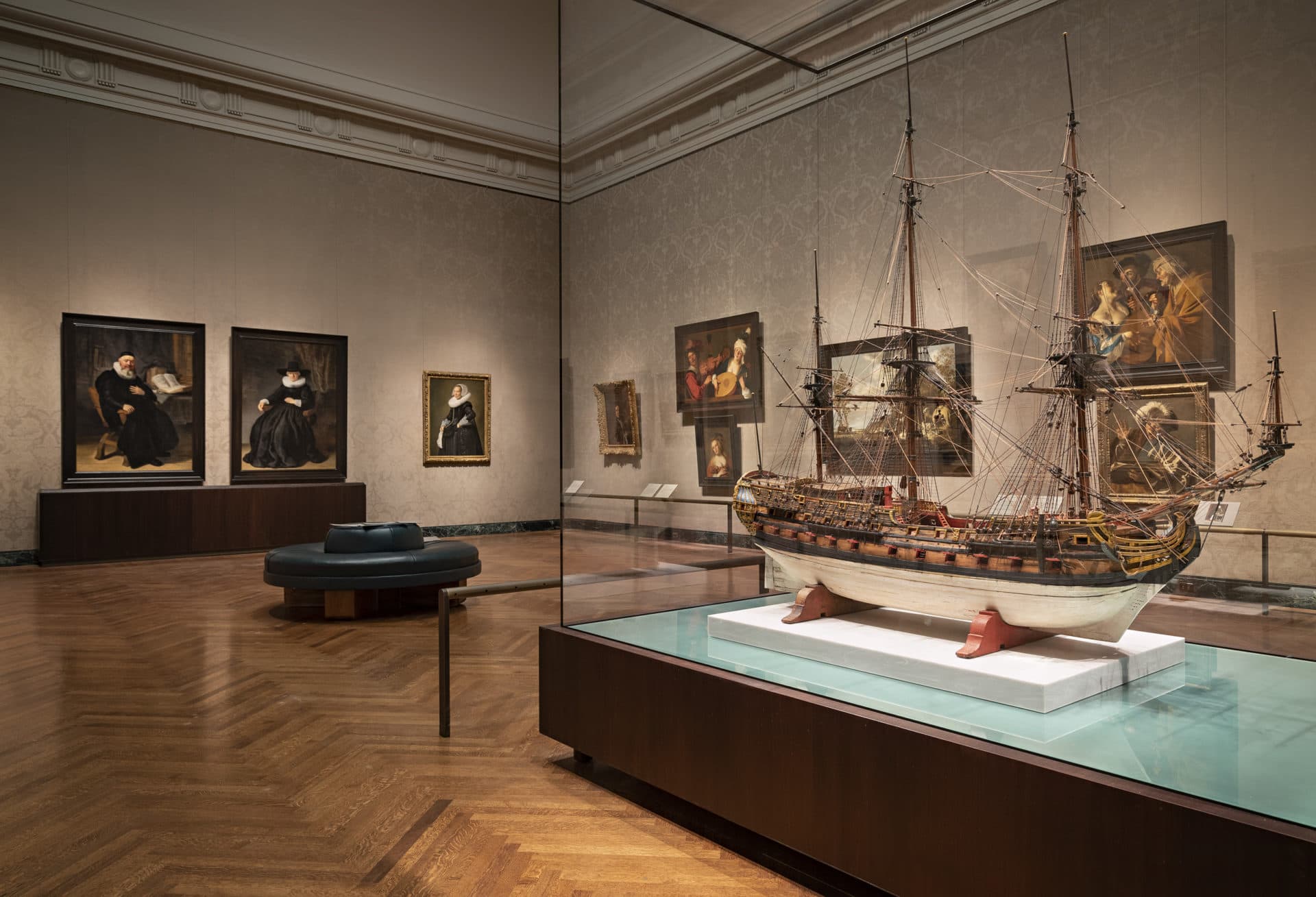
And in the middle of this gallery is a glass case containing a large 18th-century scale model of the Dutch East India cargo ship the “Valkenisse,” which sailed between the Netherlands and the East Indies, contributing to Holland’s position as a world power, which is what made all this art possible.
Art, geo-politics and commerce suggestively underlay all the displays. In a nearby room, paintings of ships and stormy harbors face dazzling still lifes depicting some of the edible and visual delicacies imported by those very vessels.
This new installation is made possible by gifts, promised gifts and long-term loans (a total of 114 paintings) from two pairs of generous benefactors: Rose-Marie and Eijk van Otterloo and Susan and Matthew Weatherbie. What collectors of this art wouldn’t be honored to have their works be part of the MFA’s outstanding collection, hanging in the company of two of the most renowned Netherlandish painting in America: the MFA’s magnificent Rogier van der Weyden “St. Luke Drawing the Virgin” (for the first time in my memory finally displayed to full advantage), whose intricate details — figures and landscape, clothing and objects — the curators regard as a source of inspiration for the whole later history of Dutch and Flemish paintings; and Rembrandt’s miniature marvel, “Artist in His Studio.” Most scholars take St. Luke, van der Weyden’s portrait of an artist, to be his self-portrait, just as Rembrandt’s artist — intensely surveying his new canvas — is surely a self-image if not a self-portrait. These two masterpieces practically face each other at that opening doorway, inviting us — welcoming us — in.
Advertisement
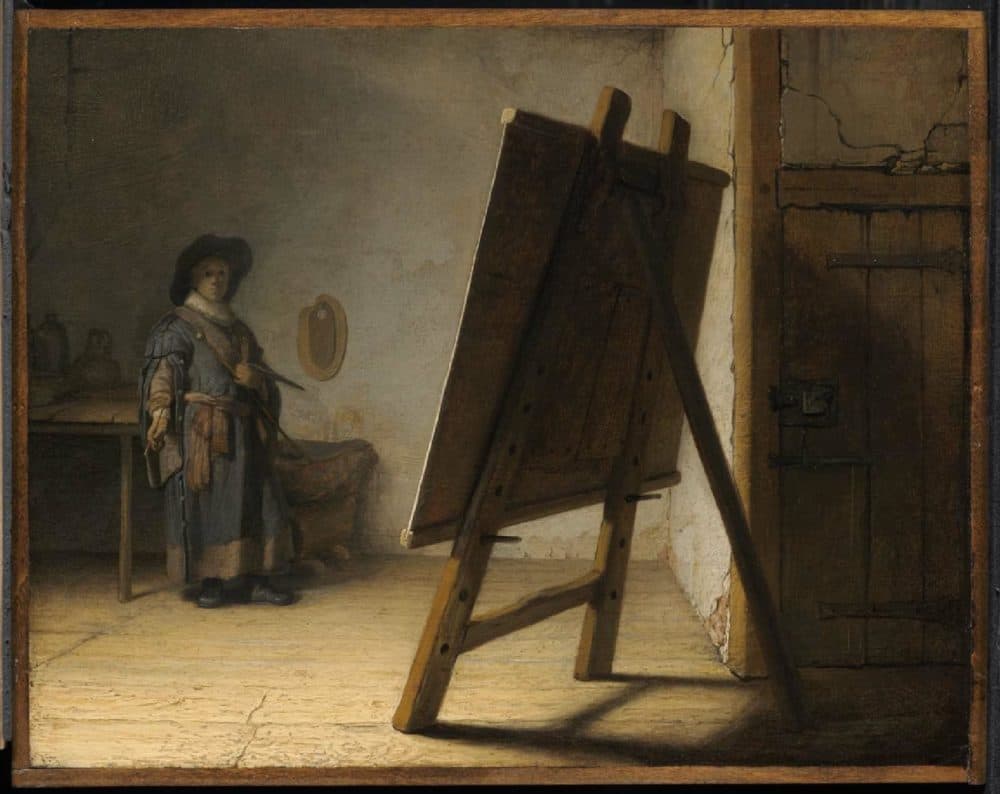
And what treasures await us: Gerard ter Borch turning paint into satin; Jacob van Ruisdael’s small but eye-opening vistas of Haarlem and Alkmaar (“minute and vast and clear,” as Elizabeth Bishop might have described them); three glowing whitewashed church interiors by Pieter Saenredam (even one would be incredibly rare); a deliciously crowded Hendrick Avercamp ice-skating scene; three small but vivid self-portraits by Gerrit Dou, Judith Leyster, and Maria Schalken (for centuries considered to be painted by her brother).
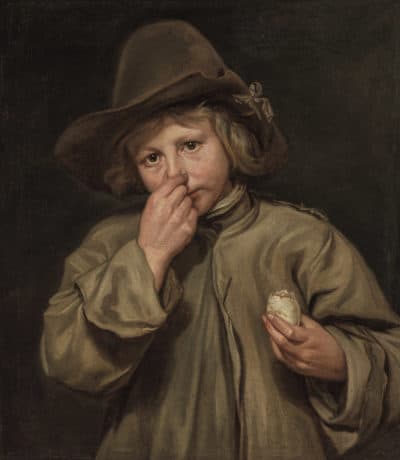
Here, for a change, women artists get their due. One of the highlights of the new installation, in the so-called “Upper Hemicycle” (the circular hallway at the top of the stairwell outside the gallery-rooms themselves), are “The Five Senses,” a series by the virtually unknown Belgian artist Michaelina Wautier (1604-1689), perhaps the first time they’ve ever been publicly displayed. Five very real young boys each demonstrate one of the senses: one staring at his hand through spectacles (“Sight”), one pinching his nose at an evidently rotten egg (“Smell”), one playing a flute (“Hearing”), one biting into a slice of buttered bread (“Taste”), one having just gashed his finger (“Touch”).
And not just paintings. Besides the ship model, there’s a contemporary re-creation of a splendid doll’s house, filled with more than 200 original miniatures; a fabulous coconut-shell cup (1607) topped with a silver sea-monster about to be speared by Neptune, held up by a mermaid sitting on a dolphin, and all supported by four tiny silver turtles. Vitrines of silver and ceramics include numerous objects similar to some of the objects in the paintings.
These rooms are also connected to a less conspicuous but equally important enterprise housed several floors below, in the MFA’s new Center for Netherlandish Art (CNA), the first of its kind in this country. It will open in January to students, collectors, conservators, art historians, international scholars and the public on an appointment only basis. The CNA features a vast 43,000-volume library of scholarly and rare books, a “state-of-the-art Conservation Center,” a handsome reading room, space for meetings and events, staff offices and even a small selection of paintings not on view upstairs.
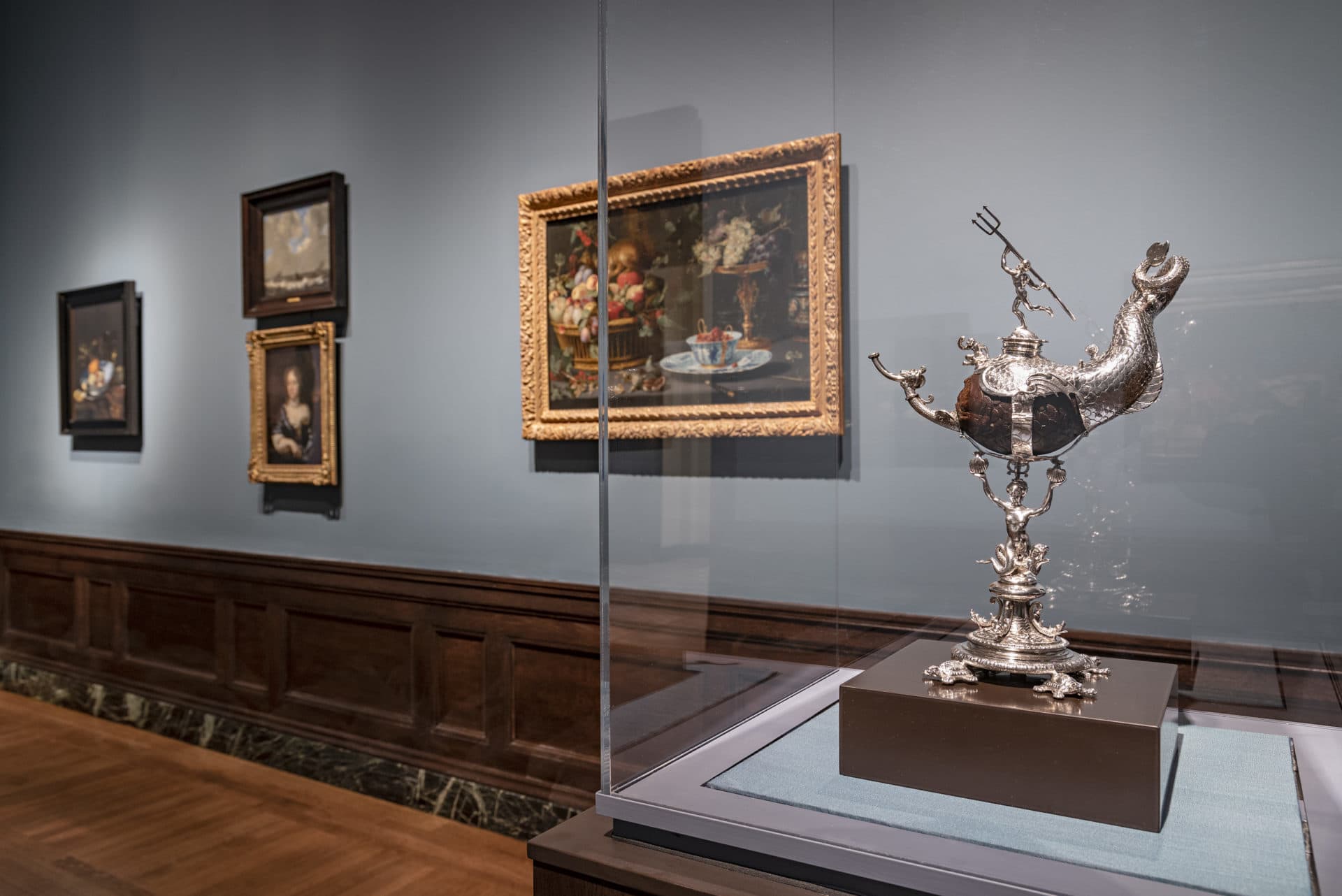
The center has received support from both the Netherlands and Belgium, and lists among its regional and global partners Amsterdam’s Rijksmuseum, the Harvard Art Museums, as well as Harvard, Northeastern, Yale and Brown Universities. Enhanced digital access, “collection sharing” with other partnering institutions, a fellowship program and a summer institute (beginning in 2023) are all in the works.
Already on view is a room in the new gallery space called the CNA Innovation Gallery, which will feature annually rotating collaborative displays. The current one is in conjunction with Northeastern, and it includes some of the most outstanding paintings in the collection. Do I ever want it to change? No. Am I looking forward to the next one? Yes!
